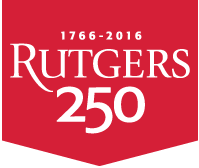

People
Research
Other pages
Experimental Nuclear Physics Research Activities
Nuclear physics has expanded in recent years. It now encompasses topics formerly considered the domain of particle physics, including exotic mesons, multi-GeV reaction studies, and the quark-gluon plasma. Even the more traditional nuclear structure studies now explore regions of nuclei and nuclear excitation, angular momenta, and stability that were not previously accessible, because of the advent of more advanced detectors and accelerators.
The nuclear structure experimentalists have been involved in the identification of a nonaxial symmetry in nuclear structure and tests of symmetry- based models of nuclear structure by measuring electromagnetic moments, level energies, and gamma ray transitions using a variety of nuclear probes. The current research effort in nuclear structure is focused on excitations at high angular momenta and nuclei far from stability. There is a special interest in the identification and characterization of nuclei with large quadrupole deformations. Aspects of this program also study the transitional nuclei, near the onset of collective motion.
The Rutgers Nuclear Physics group has a long tradition and expertise in measuring magnetic moments of short lived excited nuclear states. The measurements using the transient magnetic field technique were greatly improved by employing Coulomb excitation of beam projectiles in inverse kinematics. This method is well suited for applications of radioactive beams. The first successful measurement using a radioactive beam, 76Kr, was performed at the 88 Inch Cyclotron in Berkeley in Aug. 2003 .
Two of the experimentalists are involved in the broad area
known as intermediate energy nuclear physics. Their work is
concentrated on understanding the basic structure of the nucleon, and
how the nuclear environment changes that structure. Much of this work
is based on the use of spin as a sensitive probe of the nucleon. The
image shown below presents recent measurements of the proton
electromagnetic structure, made with the polarimeter built by the group
along with colleagues at William & Mary and other nstitutions. The
experiment, led by Charles Perdrisat (W&M), Vina Punjabi (W&M),
and Mark Jones (W&M), was several times more precise than any
preceding measurement. It yielded the surprising result that the proton
electric structure deviates from the expected dipole form factor in
momentum space, which corresponds to an exponential charge distribution
in space. (Find out more here .) Other major
experimental efforts also focus on spin physics. These include studying
the structure of the deuteron at large momentum transfer, using
photo-reactions to study the transition between nucleon and quark
degrees of freedom, examing the Drell-Hearn-Gerasimov sum rule, which
relates a static property, the anomalous magnetic moment, to a dynamic
one, the total inelastic spin asymmetry, and determining the
quark / spin structure of the nucleon through a variety of experiments,
including both electron and neutrino scattering.
Major efforts are now located at the Argonne and Lawrence
Berkeley National laboratories, the accelerator laboratory of Yale
University, and at major intermediate energy laboratories at Mainz,
Germany, Jefferson Lab, a 6 GeV electron accelerator in Newport
News, Virginia, at which physics operations started during 1996, as
well as at Fermilab with the MINERvA neutrino scattering experiment.
Please send any comments on this page to Ronald Gilman, rgilman@physics.rutgers.edu.
Find more about:
Jump to:
| Undergraduate Courses |
| Graduate Courses |
| Events Newsletter |
| Outreach Activities |
| Observatory Nights |
| Alumni & Friends |
| Alumni Newsletter |
